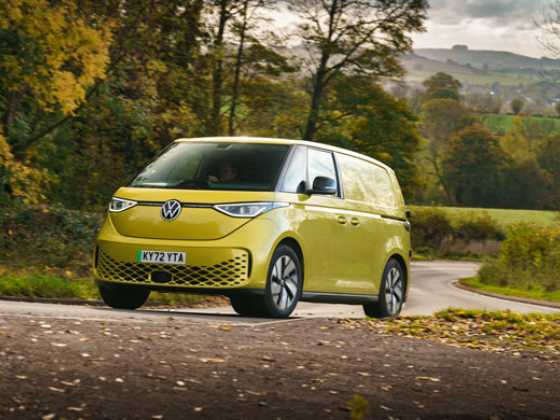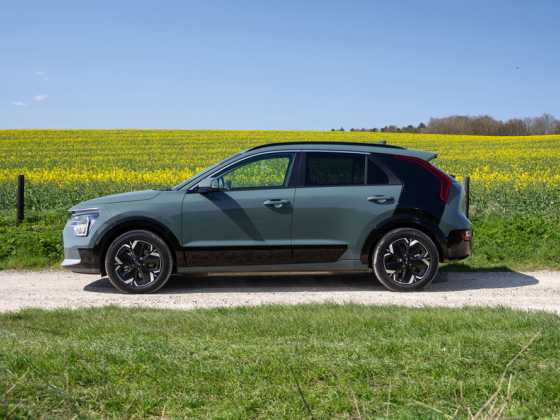First Drive: 2016 Nissan Leaf 30kWh
What is it?
As with the Mitsubishi Outlander PHEV, the Nissan Leaf will need no introduction to GreenFleet readers. Launched in 2011, it has become the market-leading all-electric vehicle not only in the UK, but also in Europe and around the world.
With 12,000 sold in the UK over the past five years (200,000 globally), the C-segment electric Nissan commands a 57 per cent share of the pure electric vehicle (EV) market. The latest ‘Phase 3’ model launched this year addresses the main concern most internal combustion-engined (ICE) car drivers have with EVs, namely that of range.
The ‘Phase 2’ Leaf which arrived in 2013 featured many improvements over the first-generation car, and likewise, the 2016 update also boasts many small detail changes which enhance the Leaf’s appeal. The most significant improvement is the rise in range from its bigger 30kWh battery.
Now, the Leaf can deliver a claimed 155 miles of range – an increase of 25 per cent – while the Japanese company states that the larger battery also has a 26 per cent increase in energy density. The ‘Phase 2’ car had an official range of 124 miles, so the extra 30 miles or so means the Golf-sized Leaf can be used outside of urban landscapes.

While it’s still no long-distance motorway tourer, it does suggest that the Nissan EV can accommodate longer journeys much more easily. However, as with all EVs and hybrids, the quoted range is in absolute optimal conditions, so expect a dip in real-world weather and driving cycles to around 125 miles.
In a move which gives drivers more choice, the 124-mile range 24kWh models remain on sale, with the 30kWh Leaf only available in mid-range Acenta and top-spec Tekna trims. As you’d expect, all models receive a regenerative braking system, while Acenta and Tekna variants are also bestowed with energy-saving extras such as a ‘B-mode’ for ‘enhanced’ regenerative braking, and a heat pump for heating the cabin.
There’s also the new Nissan Connect EV app system, which can be accessed from a smartphone to allow charging management, remaining range, charge point locations and their real-time availability, as well as climate control activation.
An online account also allows drivers to see their driving history, plan routes, and discover how their efficiency rates among other Leaf drivers. Additional car and driving information can be displayed on the car’s seven-inch colour touchscreen.
How does it drive?
A limited test route of around 55 miles was never going to stretch the new car’s longer range capabilities, but with directions around largely flat Northamptonshire A-roads and lanes, the Leaf 30kWh coped well. Keeping up with fast-flowing traffic flow is no issue thanks to the 254Nm (187lb ft) of torque from the 80kW electric motor.
As with other EVs, the new Leaf 30kWh is a relaxing car to drive, with increased levels of refinement and very little road or wind noise. There’s the familiar electric motor whine of course, but it barely registers, while the single-speed gearbox is easy to use with its four ‘modes’.
 The switchable ‘eco’ mode worked particularly well, with the car’s power noticeably contained – Nissan claims the function can improve range further by 10 per cent.
The switchable ‘eco’ mode worked particularly well, with the car’s power noticeably contained – Nissan claims the function can improve range further by 10 per cent.
Suspension set up for comfort rather than out-and-out handling adds to the impressive-feeling, with bumps and lumps well contained. The overall impression is that the Leaf really does feel little different to an ICE car, which will appeal to a lot of drivers both in the private and business environments. Interior space is as before, the larger battery having the same footprint as the smaller capacity unit. Seats-up luggage capacity is 370 litres on both 24kWh and 30kWh variants.
Our range-topping Tekna test car featured lots of kit, with auto lights and wipers, leather seats, LED headlamps, Nissan’s 360-degree 'Around View Monitor’ parking assist system, and 17-inch alloy wheels all standard equipment.
Externally and internally, the car is much as before. This might challenge some, as the looks might not be to everyone’s taste (although the ‘Sonic Blue’ paintwork on our car looked great) and while some of the interior plastics would benefit from being upgraded, the Leaf’s cabin is still a very comfortable, user-friendly and quiet place to be.
How long does it take to charge?
As with the 24kWh model, 30kWh Leafs can be recharged from public charging stations, or from the DC rapid charger network. Rapid-charging takes around 30 minutes from 0-80 per cent capacity, while a home charging point replenishes the battery in 9.5 hours (3.3kW on-board charger version) or 5.5 hours (6.6kW on-board charger version). Use the EVSE domestic plug cable and that time increases to 15 hours for the larger-capacity car.

What does it cost?
Prices start at £24,490 for the mid-range Leaf Acenta 30kWh, with the £27,940 Tekna topping the price list. As pure EVs, all Leafs benefit from the full current £5,000 Government Plug-in Car Grant subsidy, and will be among the cars available with the top-tier revised Category 1 grant of £4,500 from 1 March 2016.
How much does it cost to tax?
Being an all-electric vehicle, the Leaf sits in the lowest possible VED band, A, and is exempt from road tax. Benefit in kind is equally low, with the Nissan EV commanding only a five per cent rate.
Should I buy one?
Overall, the 2016 Nissan Leaf remains a solid, value-driven choice for EV drivers and ICE motorists who want to make the switch into an electric vehicle. The longer-range battery undoubtedly adds to the Leaf’s appeal, while the increased kit count and ease of use are also benefits to be enjoyed.
2016 NISSAN LEAF TEKNA 30KWH
Engine: 80kW AC synchronous electric motor
Electricity consumption: 150Wh/mile
CO2: 0g/km
Range: 155 miles
VED: Band A, £0
BIK: 5%
Price: £24,490 - £27,940 (£26,490 as tested)









